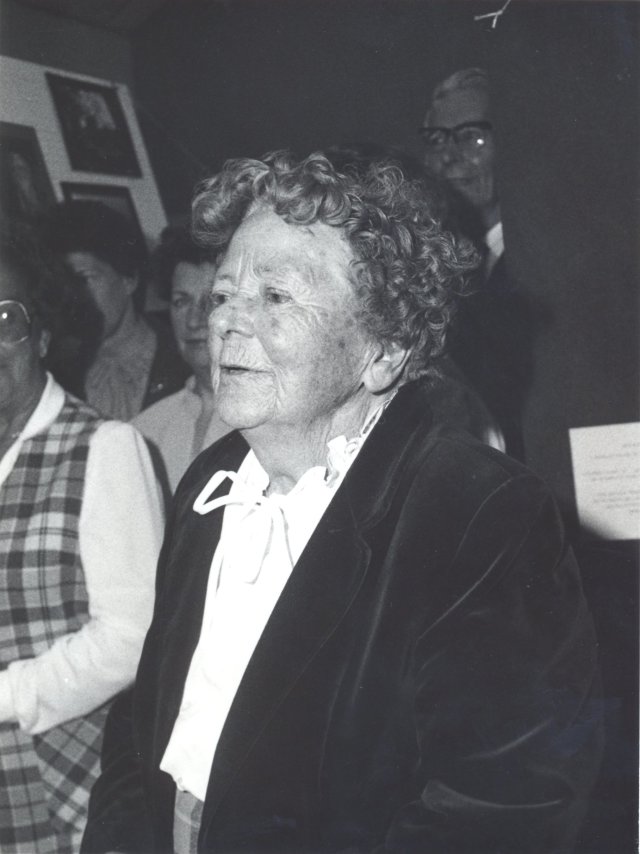MENU

Mona Douglas is one of the most important people who worked to promote Manx culture in the 20th century.
A collector of folklore, music, song and dance, she also wrote and published poetry, plays, novels and factual articles all about the Isle of Man. She published at least 18 books and many more articles in journals and newspapers.
Douglas was a performer of song and dance, a teacher and youth leader. Working with others, she developed organisations and festivals such as:
Aeglagh Vannin (Youth of Man) – youth club
Ellynyn ny Gael (Arts of the Gael) – arts society
Yn Chruinnaght Inter-Celtic Festival (The Gathering)
Douglas worked to promote traditional culture within the Isle of Man and Manx culture on the international stage. She persuaded professional composers to arrange Manx music and poetry. What was amazing is that she did all of this in her spare time – to earn a living, she worked as rural librarian for the Isle of Man Education Authority and, for much of her life, ran a working farm, picking up work as a paid journalist when well into retirement.
Why was she interested in Manx culture?
Mona Douglas started collecting material as a child and never stopped. She was ill as a child and didn’t have to go to school – instead, she went to live with her grandparents in the Isle of Man, running around the hills and meeting people who could tell her about everything Manx.
“much of my own life has been spent among the shepherds and farmers and fisherfolk to whom what is officially known as folklore is no mere field of scientific enquiry but a vital and important part of everyday life”
How did she go about it?
“When I was ten I met the late Miss Sophia Morrison, a keen folklorist and then Secretary of the Manx Society. She was kind to my childish enthusiasm for old Manx lore and encouraged me to put down in writing all I could glean of tales, songs, dances, place-names and so forth. It was chiefly owing to her encouragement that my conscious collecting of folk-material began…” (draft autobiography)
She wasn’t very confident about writing music down by ear, so she would learn a song or tune, then run home to play it on the piano so that she could write the notes down.
Mona Douglas collected lots of songs and dances, the most important – and controversial – of which is the Dirk Dance, sung to ‘Reeaghyn dy Vannin’, the Kings of Mann.
The dance was collected from Jackie Kermode of Port Mooar and the tune from the singing of his wife. Jackie Kermode told Mona Douglas that the dance dated back to the Kings of Mann and that he had learnt it from his father. Douglas accepted this story although there was no evidence to back it up. The dance was said to be ceremonial and today it is still often performed on Tynwald Fair Day to ‘purt y beayll’ or ‘mouth music’ to the song ‘Reeaghyn dy Vannin’.
Why is she famous?
Douglas was well-known in the Island and throughout the world as the person to ask about Manx culture. She wrote articles in international journals and represented the Isle of Man as a performer and speaker at festivals. She worked with professional composers such as Arnold Foster to make arrangements of Manx music. She published more than 18 books of poetry, music, dance, plays, novels and non-fiction about the Island’s heritage. In recognition of her contribution, she was given the following awards:
1917 Member of the Gorsedd of the Bards (Wales)
1972 Manannan Trophy
1980 International President of the Celtic Congress
1982 MBE
1987 Appointed to the Principal Order of the Gorsedd and given a Bardic name Mona Manaw
1988 Reih Bleeaney Vanannan – Manx cultural award (awarded posthumously)
Breesha Maddrell
Try authors such as:
Bazin, Fenella Crowe - Mona Douglas, A Tribute
Broderick, George
Carswell, Robert
Maddrell, Breesha
Miller, Stephen
NEW CD/DVD Mona's Isle - The legacy of Mona Douglas
Working Guide no. 1 THE 1930 EFDS VACATION SCHOOL by Stephen Miller

Contact, Links, Acknowledgements, Privacy
© Culture Vannin. Culture Vannin is the trading name for the Manx Heritage Foundation, registered charity 333 in the Isle of Man. Designed by 3 Legs Ltd.